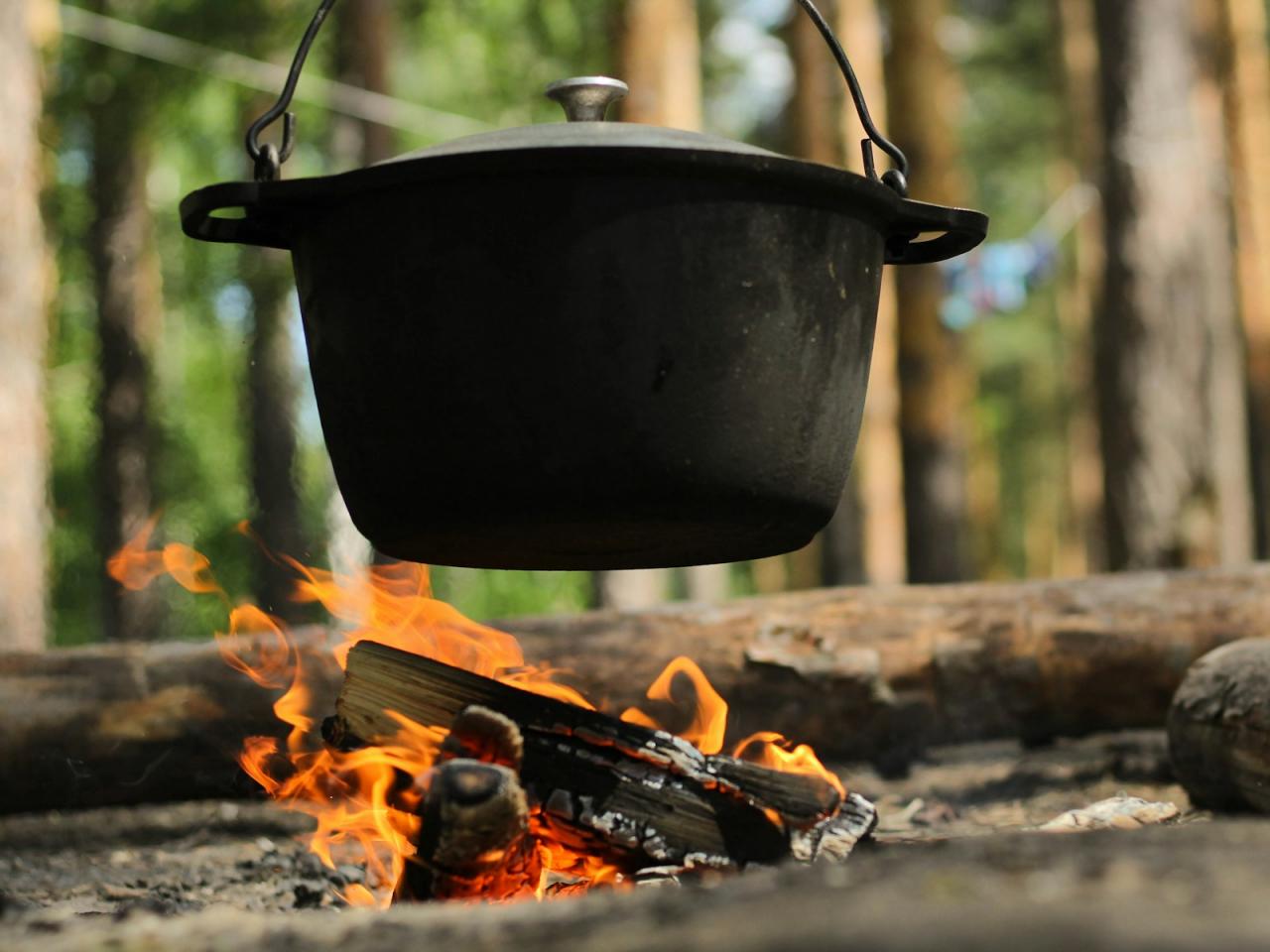
Why Use a dutch oven?
Outdoor camping creates many memories. One of these is the entirely different feel that comes from cooking outdoors. While there are many different methods to outdoor cooking, dutch ovens have proven their versatility over thousands of years. Anything that can be baked, boiled, or fried in a kitchen can be made in a dutch oven. There’s no reason your camping recipes can’t taste just as great as anything you make at home, whether you are cooking over an open campfire or on a Coleman portable RoadTrip grill.
Here are a couple recipes from Matt Pelton’s The Cast Iron Chef that illustrates just how easy it is to cook in a dutch oven.
********************************************************************************
Traditional Dutch Oven Lasagna
2 (12 oz.) pkgs. lasagna noodles3 cups ricotta cheese1 cup cottage cheese½ cup chopped green onion4 eggs, whipped1 lb. sweet Italian sausage6 cloves garlic, minced4 cups grated mozzarella cheese1 (24 oz.) can marinara sauce
Begin by soft boiling the noodles so they are pliable but not soft. In a bowl, mix the ricotta cheese, cottage cheese, green onions, and eggs. Chop and cook the sausage. Layer the ingredients, starting with the noodles, followed by the cheese mix, sausage, garlic, marinara, and then mozzarella cheese. Repeat with remaining ingredients. Finish by sprinkling the remaining mozzarella cheese on top. Bake for 45-60 minutes at 350 degrees. Let the lasagna stand for 10-15 minutes before serving.
Cheddar Broccoli Soup
¼ stick butter4 cloves garlic, crushed6-8 cups broccoli florets, cut into bite-sized pieces2 (14 oz.) cans vegetable brothstarch to thicken2 cups heavy cream? lb. cheddar cheese, grated
Begin by melting the butter and lightly stir-frying the garlic. Add the broccoli and the vegetable broth. Roast for 20 minutes or until the broccoli is tender. Thicken the soup with the starch until it reaches desired consistency. Slowly stir in the cream and cheese. Cook until cheese has melted.
********************************************************************************
How a dutch oven works
- Heat transfer: Dutch ovens are so thick that they heat evenly and thoroughly with very little effort on your part (other than a little patience).
- Consistently seasoned: Dutch ovens work best when properly “seasoned.” This simply means that after you have purchased a dutch oven that you take the time to remove the manufacturers oils and coatings on the oven. Manufacturers do this to protect the oven during shipping and warehouse storage. Follow these simple instructions for seasoning your dutch oven.
Cleaning and storing your dutch oven
Understanding why a dutch oven must be stored a certain way will aid in understanding why it must be cleaned a certain way.
A dutch oven is meant to be oily. When you “season” a dutch oven you are essentially covering it with oil that will be re-used time and time again. Dish soap is specifically made to break down oils in dishes (see Dawn’s rescue of animals covered in oil). if you use dish soap to clean your dutch oven, you’re going to have to go through the seasoning process all over again. That said, a little bit of soap won’t hurt your dutch oven, but it’s probably not the best method for daily cleaning.
I like to think of dutch ovens as traditional, classic cooking tools. The pioneers that trekked across this country so many years ago didn’t have the novelty of oil-reducing soap. So what did they use? Some of the most basic methods for cleaning a dutch oven in the 1800s are still valid today.
- hard brushes: the pioneers used brushes made from boar bristles, but plastic works just fine for us today.
- towels: the pioneers would have used harsh cotton towels or something similar. One of my personal favorite inventions of the past century are paper towels (we’ll leave the argument about how they affect the environment for another day). Simply use paper towels to scrub out any mess in your dutch oven and lightly cover with oil before storing again.
- Clean by hand: do NOT use a dishwasher. The pioneers have never heard of such a thing, but they would be the first to tell you how putting your precious dutch oven in the dishwasher will destroy it.
Storing your dutch oven
If you’ve fallen into the common trap of dutch oven storage that most do, don’t feel too bad, but pay attention to the next steps for proper dutch oven storage.
Proper oiling: it’s important to understand different types of oils. Oil is used as an anti-rust in your car and other potentially rusty places. So it stands to reason that you might assume that drenching your dutch oven in oil before storing it will fend off the rust. This is true to a point, but cooking oil works much differently than motor oil. When cooking oil breaks down over a period of time, it becomes rancid. You’ve experienced this first hand if you’ve stored your dutch oven for a long period of time and opened the lid to an unexpected stench.
To avoid this, follow the simple cleaning steps above. Then, before storing your dutch oven, wipe it clean with a paper towel again. The oil needed for cooking can be reapplied before your next use. Wipe a thin coat of cooking oil over the cooking area of your dutch oven right before you use it next. This method will leave your dutch oven smelling normal when stored in your garage for a period of time.
More tips on dutch oven cooking and dutch oven recipes can be found in Matt Pelton’s bestselling The Cast Iron Chef: Main Courses.



